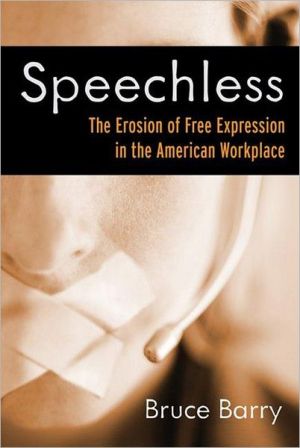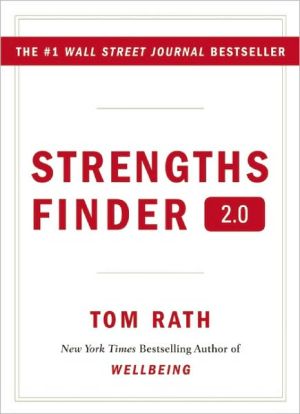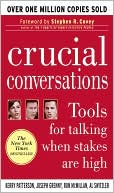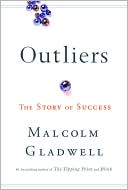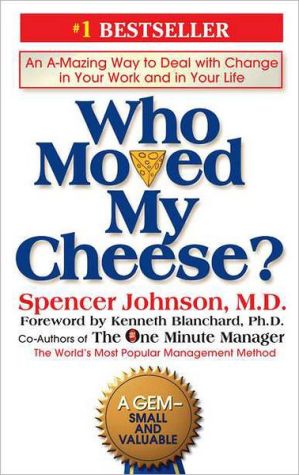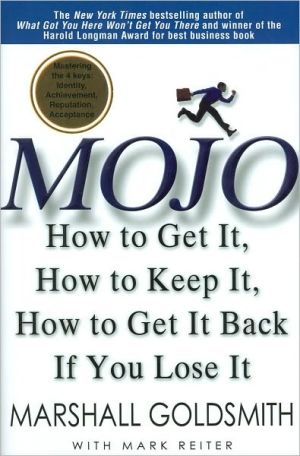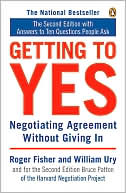Speechless: The Erosion of Free Expression in the American Workplace
A factory worker is fired because her boss dislikes the political bumper sticker on her car in the parking lot. Another is canned after refusing to display an American flag at his workstation. A flight attendant is grounded because her airline doesn't like what she's writing in her personal blog. Is it legal to fire people for expressing themselves, even when it's unrelated to performing their jobs? Can you lose your job because of a bumper sticker? For many American workers, the answer is...
Search in google:
A factory worker is fired because her boss dislikes the political bumper sticker on her car in the parking lot. Another is canned after refusing to display an American flag at his workstation. A stockbroker is pressured into resigning by an employer who disapproves of his off-work political activities. A manager gets the ax because of his online essay about homosexuality. A flight attendant is grounded because her airline doesn' t like what she' s writing in her personal blog. Is it legal to fire people for expressing themselves, even when it' s unrelated to performing their jobs? Can you lose your job because of a bumper sticker? For many American workers, the answer is yes, indeed. In "Speechless," Bruce Barry confronts the state of free speech in the American workplace. He shows how employers and courts are eroding workers' abilities to express themselves on and off the job, with damaging consequences for individuals, their employers, and civil society as a whole. In defense of free speech in and around the workplace, Barry argues that the experience of liberty in a free society, as well as in life, in general, depends in part on the experience of liberty at work.
Speechless\ THE EROSION OF FREE EXPRESSION IN THE AMERICAN WORKPLACE \ \ By BRUCE BARRY \ Berrett-Koehler Publishers, Inc.\ Copyright © 2007 Bruce Barry\ All right reserved.\ ISBN: 978-1-57675-397-2 \ \ \ Chapter One\ When Work and Speech Collide \ If you want to be absolutely literal, all human life is speech. Every time a person goes to work all he does is speak. Or write. Or listen to other people speaking. Or eat lunch. —Supreme Court Justice Stephen Breyer\ THIS BOOK IS ABOUT FREEDOM OF EXPRESSION at work and after work—how expression is exercised by employees, regulated by law, and encouraged, punished, or censored by employers. The necessary place to begin is with a brief excursion into the meaning of "speech" and "expression."\ If I walk into your office carrying a cup of coffee and spill some of it on your new handmade Nepalese rug, you might see that as a careless act but probably not as an expressive act. But suppose I come to your office, notice your new Nepalese rug, and voice my disgust at the prevalence of child labor in Nepal's hand-knotted rug industry. I then state my intention to spill coffee on the rug to protest your consumer support for Nepal's hand-knotted rug economy, and I proceed to spill as announced. Is the spill now an expressive act? Surely yes, because it is specifically intended to convey a viewpoint. (It wouldn't, of course, be a legally protected act, since courts are unlikely to forgive the destruction of someone else's property in the name of free speech.)\ We can accept with little difficulty that "freedom of speech" (as the First Amendment phrases it) refers fundamentally to verbal communication—messages conveyed with words, whether oral or written. Expressive behavior doesn't require words, however, and there are many ways to express an idea or a viewpoint nonverbally or symbolically. Justice Breyer's (sarcastic) observation is one way to imagine the reach of symbolic expression: any action can potentially be perceived or understood as a form of communication, which means that everything we do has some conceivable form of expressive value. Although philosophically interesting, this approach to "expression" is hardly practical: if any and every nonverbal action can be painted as a form of communication with free speech value, then we'll have people claiming First Amendment protection for criminal behavior and courts trying to sort out whose expressive conduct is sincere and whose isn't. Besides, as Stephen Breyer conceded in his next sentence, "The First Amendment cannot possibly allow you to run to the court with a First Amendment case every time you open your mouth."\ Figuring out whether nonverbal conduct qualifies as "speech" or "expression" is an ongoing First Amendment dilemma. Courts have wrestled with the boundary between conduct (doing something that may have expressive value) and speech (expressive value that earns legal protection) for the better part of a century. The U.S. Supreme Court seems especially apt to involve itself in symbolic speech cases when people burn things, like draft cards and flags. The issue of "desecration" of the American flag, in particular, is one that seems to recycle politically every so often. Flag burning itself is obviously not a pressing issue in the arena of workplace expression, but expressive activity that amounts to symbolic protest is as relevant to work as to any other social setting. The legal history of symbolic speech is worth a quick digression because it sheds light on the meaning of speech and expression, and on the divide between verbal and symbolic expression.\ That history is dominated by the flag. By the early 1900s, at the behest of veterans' organizations and other patriotic lobby groups, most states had laws on the books making it illegal to mar, mutilate, deface, or alter any object that resembled the U.S. flag, or to use the flag for advertising purposes. A test of one of these laws—Nebraska's—reached the U.S. Supreme Court in 1907 when the owners of a beer bottling company were convicted of a misdemeanor and fined fifty dollars for selling Stars and Stripes beer with a flag on the label. Ruling against them (and their beer), the Court said that a state is entitled to cultivate patriotism by regulating uses of the flag and that no "right of personal liberty is violated" when a state forbids the use of the flag as an advertisement on a bottle of beer.\ Eventually—it took over a half century—the Supreme Court came to treat the symbolic act of altering or destroying a flag, when done in the service of delivering a political message, as speech worthy of First Amendment protection. But that conclusion was embedded in a larger Court struggle with the boundary between illegal "conduct" and legally protected "expression." (The Court didn't even view labor union picketing as a form of speech until the late 1930s.) In a famous Vietnam-era case, a man named David O'Brien burned his draft card—a violation of federal law—to convey an antiwar message and argued that the law he violated was unconstitutional because the act of burning his draft card is protected symbolic speech. O'Brien lost in the Supreme Court, which in 1968 rejected the notion that "an apparently limitless variety of conduct can be labeled 'speech' whenever the person engaging in the conduct intends thereby to express an idea."\ But the Court in 1974 sided with a college student in Seattle who flew a U.S. flag upside down from his apartment window with a peace sign affixed to it in an effort, he said, to associate the flag with peace instead of war. The Court ruled that this kind of communication "through the use of symbols" with "intent to convey a particularized message" merits constitutional protection. Full recognition of the link between symbolic protest and free speech came in the case of a protestor at the 1984 Republican National Convention in Dallas who burned a flag and was prosecuted under a Texas law. Deciding for the protestor, the Supreme Court rejected the state of Texas' claim that destroying a flag is not expressive conduct and asserted that it doesn't matter whether legitimate expression takes a verbal or nonverbal form. The distinction between verbal and symbolic conduct, said the Court, "is of no moment where the nonverbal conduct is expressive, as it is here, and where the regulation of that conduct is related to expression, as it is here."\ Having now made it clear that flag burning is protected free speech, the Court triggered numerous attempts to amend the U.S. Constitution to "protect" the flag—efforts that over the years have found lawmakers and others struggling with the tension between "conduct" and "speech." In Senate floor debate on a flag amendment in 2006, Pennsylvania's Arlen Specter asserted that "flag burning is a form of expression that is spiteful or vengeful. It is designed to hurt. It is not designed to persuade." Dianne Feinstein of California called burning a flag "conduct, not speech" because the flag is "the symbol of our democracy, our shared values, our commitment to justice, our remembrance to those who have sacrificed to defend these principles." You don't have to be opinionated one way or the other about flag "desecration" to see the hair-splitting illogic in both senators' comments. Each makes a tortured effort to differentiate flag burning from other types of symbolic political expression because of the kind of expression involved (it's vengeful or spiteful or not designed to persuade or about shared values). Neither, however, succeeds in defeating the reality that flag burning in the service of political protest is inescapably expressive.\ People may not be burning flags on the job, but they are engaging in other forms of symbolic expression that raise workplace speech concerns. And as with flag burning, sometimes the expression makes people uncomfortable. But is it protected free speech? Baltimore police office Robert Berger put this question to the courts back in the 1980s when his employer (the city police department) tried to force him to cease his after-work activity: giving, at bars and taverns, musical performances that featured an Al Jolson impersonation in blackface makeup and a black wig. Berger argued that the police department's actions violated his First Amendment rights to free speech. As we'll see in more detail in Chapter 4, a government employee has free speech rights an employer cannot infringe, as long as the "speech" is on a matter of public interest (and is not disruptive to employer interests). A federal appeals court said Berger's performances qualified as artistic expression that met the standard, being "of obvious public interest to those considerable segments of the community who willingly attended and sometimes paid to see and hear them." Audiences may regard Berger's performances as entertainment rather than as an expression of political or social views, said the court, but the First Amendment still applies.\ A decade later, in the case of an Arkansas police officer named Kevin Tindle, who was suspended after wearing blackface makeup (and other racially provocative costume accoutrements) to a Halloween party, another appeals court reached the opposite conclusion. Artistic expression in front of a public audience and a costume worn to a private party are two very different things, said the court: "Here there were no public performances, and there is little in the record to suggest there was much entertainment value in Tindle's appearance." This distinction between public performance and private expression might seem reasonable at first glance as a benchmark for First Amendment protection, but applied to employee speech and employer punishment it feels arbitrary and illogical. A government employer must tolerate provocative expression after hours by a worker as long as it occurs in public before an audience, but the employer can punish that same expression with impunity when it occurs in private.\ We'll see in later chapters that an individual's ability to express himself or herself without paying a price on the job depends in various ways on the content and context of speech. The specific details of the situations I have just described, where workers engaged in racially insensitive symbolic (nonverbal) expression, may not seem routine or commonplace, but they do raise typical—and difficult—questions about what we mean by "speech" and "expression," and what kinds of expressive activity fall under the umbrella of "workplace expression," which is my focus throughout the book. I will spend the rest of this chapter answering these questions and will say a few words about why the subject of workplace expression deserves a new and detailed examination now.\ There is a temptation to use the words "speech" and "expression" interchangeably, and I find it convenient to do so at many points in the book, but it is worth taking a moment to distinguish them, at least at the outset. I start with the text of the First Amendment, which mentions "speech" but not "expression":\ Congress shall make no law respecting an establishment of religion, or prohibiting the free exercise thereof; or abridging the freedom of speech, or of the press; or the right of the people peaceably to assemble, and to petition the government for a redress of grievances.\ Thomas Emerson, one of the twentieth century's major theorists of the First Amendment, says "the root purpose of the First Amendment is to assure an effective system of freedom of expression in a democratic society." 17 The key word here is "system." The First Amendment brings together a constellation of behaviors related to the cultivation and communication of ideas—religious belief and practice, speech, a free press, assembly and free association, and petition for redress—and taken as a package they form (in Emerson's usage) a system of freedom of expression.\ Free speech, in this view, is not synonymous with free expression but is instead a piece of it. An act of "speech" might be regarded as the act of conveying to someone else an idea or an attitude, using communication methods that might be verbal or nonverbal, oral or written, published or unpublished. It can happen through an artistic performance rather than a straightforward message and can involve an overt act of communication or the absence of such an act. We have to be careful, however, with the assumption that "speech" necessarily involves communicating to an audience. C. Edwin Baker, another prominent free speech theorist, cautions that many uses of speech do not involve communicating ideas or attitudes to others. Baker calls them the "solitary" uses of speech—diary writing, prayer, self-direction, and creative self-expression, to name a few—that "contribute to self-fulfillment and often to individual or social change."\ "Speech" covers a lot of territory but represents only part of the larger idea of "expression." Freedom of speech is the freedom to say what one wishes to say in the form, and to an audience, of one's choosing (including an audience of oneself only). Freedom of expression is the broader ability not just to speak freely but also to believe what one wishes, to associate with those of one's choosing, and to live in a society where a free press and the right to petition government are guaranteed. The First Amendment, then, protects free speech and these other key freedoms as well, and taken as a whole it defines an overall system of free expression.\ FREE SPEECH AND EXPRESSION IN THE WORKPLACE\ Freedom of speech is fundamental to effective democracy and a healthy civil society. Work is where many adults develop and maintain the social ties that make up civil society. Work is also how people create for themselves economic independence—a necessity if social and political rights are to have much meaning. Yet the intersection between free speech and work has not been widely explored. Legal issues around employee speech—especially in public-sector jobs—have been percolating in courts and legislatures for many years. When the connection between work and speech does come up, the focus tends to be limited to speech at work or about work. For example, law professor Cynthia Estlund describes "freedom of speech in the workplace" as "the freedom to speak out at or about the workplace free from the threat of discharge or serious discipline." Richard Lippke, a professor of philosophy and religion, sees "work-related speech" as "speech that occurs within the workplace, but also speech which is sufficiently about work so that though it occurs outside the workplace, it is subject to employer sanction."\ I take a more expansive view. As some of the examples I mentioned in the Introduction make abundantly clear, speech with little or no connection to one's job can still attract an employer's attention and disapproval. My treatment of speech and work in this book, therefore, encompasses the full range of expressive acts that an employer might be inclined to discourage, punish, or regulate. Expression, as I suggested earlier, involves more than just the acts of verbal and symbolic communication that we think of as "speech." Expression includes the larger set of principles that come together in the First Amendment: the freedom to believe, the freedom to speak, the freedom to publish, and the freedom to associate with likeminded others. To these freedoms to act, I hasten to add the freedom not to act—the ability to be free from compelled or coerced belief, speech, or association. Freedom of expression, then, includes discretion both to act and to not act in expressive ways.\ My approach to workplace in relation to expression is also expansive. I am interested in expressive activity that happens both on and off an employers' physical premises, that occurs both during and after normal working or business hours, and that involves communication with others both internal and external to the employer's organization. In drawing a boundary around what is and isn't workplace-related speech, it doesn't really matter where, when, how, or why expression occurs. If it is expressive activity, and if it arouses the nontrivial attention of one's employer leading to good, bad, or indifferent outcomes, then it qualifies as workplace-related expression.\ Thus far I have been referring enigmatically to free speech in and around the workplace without being specific or precise about the kinds of expression involved. Here I wish to reduce this abstraction by describing some specific ways that expressive actions, topics, and contexts vary. With expression and workplace both framed in such broad terms, there is potentially a wide range of actions and situations that could be construed as workplace-related expression and that could give rise to infringements on freedom of expression. To make sense of the possibilities, it will help first to impose some conceptual order—categories—on things. I suggest here six ways to imagine variations in workplace-related expressive activity.\ (Continues...)\ \ \ \ \ Excerpted from Speechless by BRUCE BARRY Copyright © 2007 by Bruce Barry. Excerpted by permission of Berrett-Koehler Publishers, Inc.. All rights reserved. No part of this excerpt may be reproduced or reprinted without permission in writing from the publisher.\ Excerpts are provided by Dial-A-Book Inc. solely for the personal use of visitors to this web site. \ \
Contents\ Introduction: Speechless at Work in America....................1\ 1 When Work and Speech Collide....................11\ 2 Constitutional Rights in Public and Private....................26\ 3 Unemployment at Will....................42\ 4 Public Employee Speech....................63\ 5 A Chill in the Private Sector....................96\ 6 Why Free Speech Works....................125\ 7 Civil Rights and Wrongs....................140\ 8 Speech in the Digital Age....................166\ 9 Managing Expression inside the Workplace....................190\ Conclusion: The Case for Freer Expression....................207\ Acknowledgments....................231\ Notes....................233\ Index....................277\ About the Author....................287
